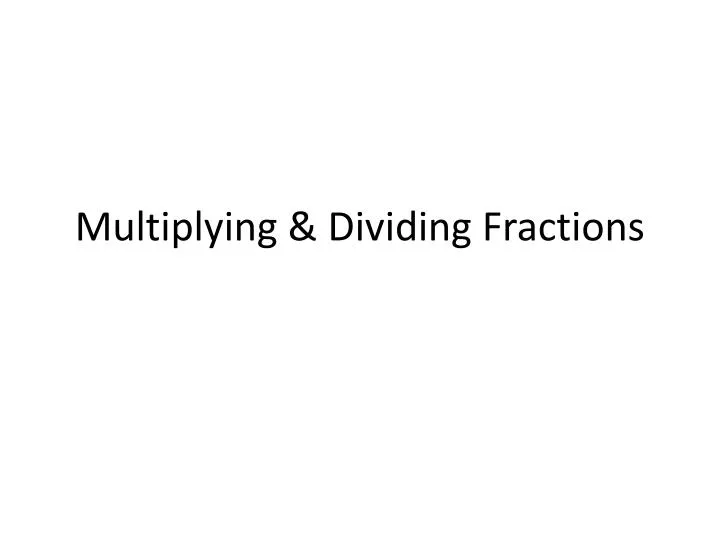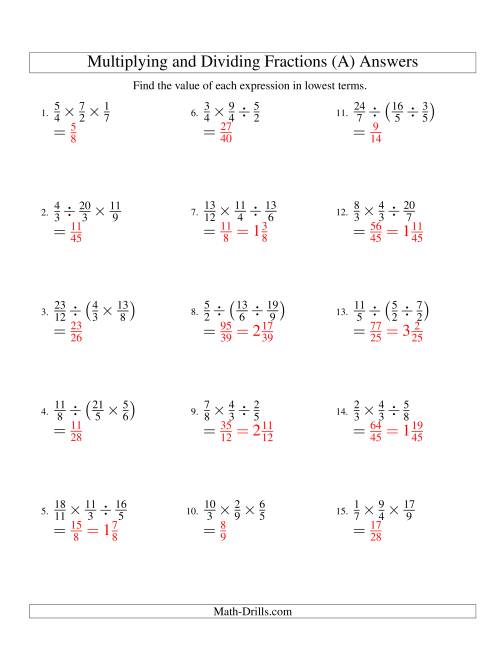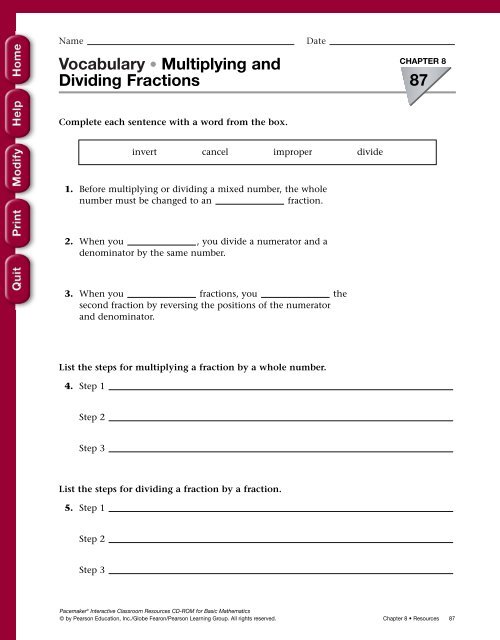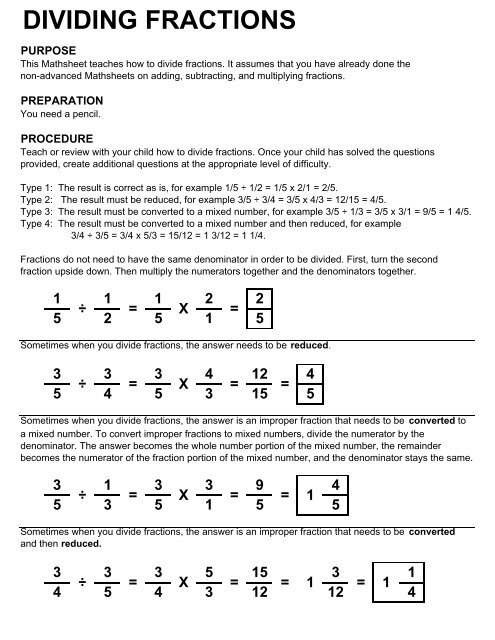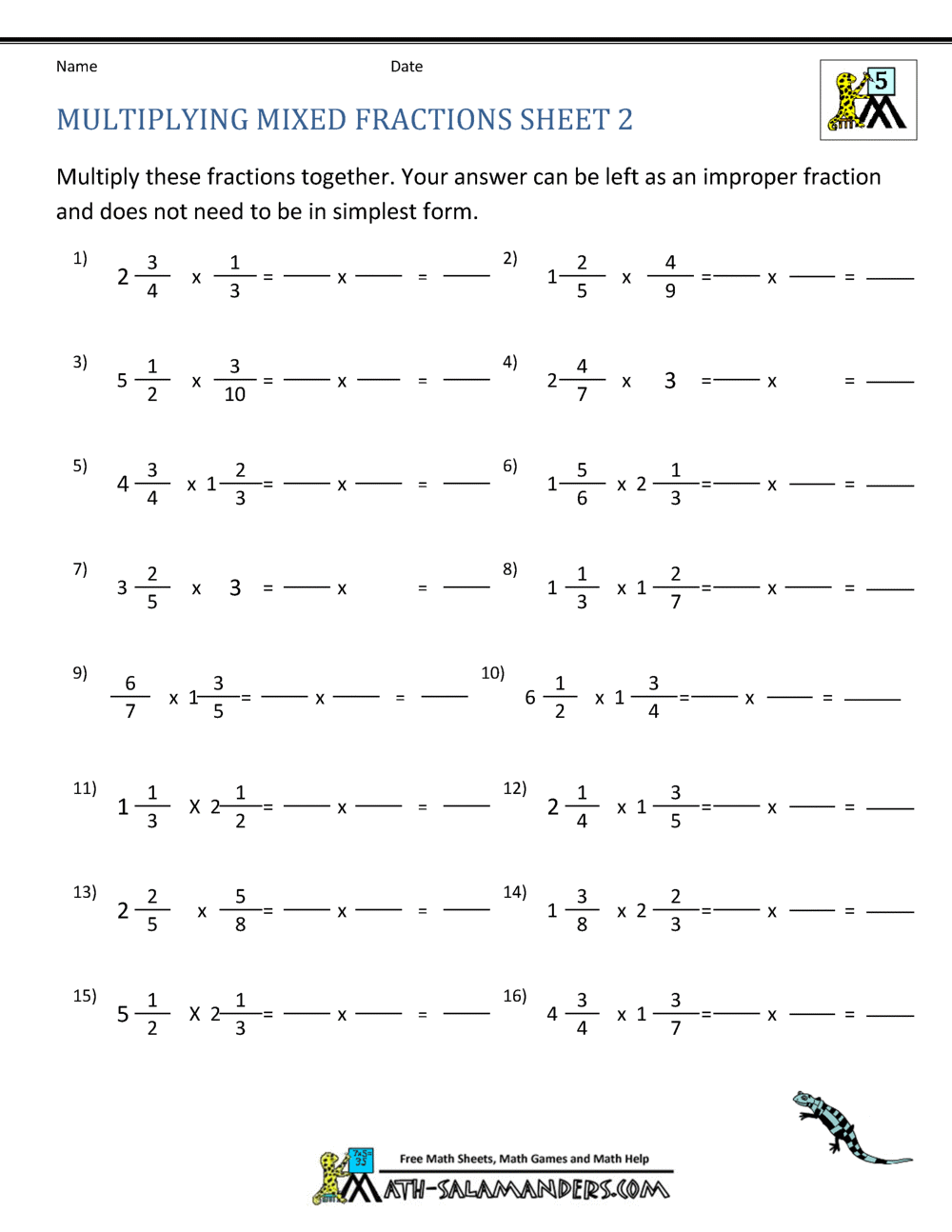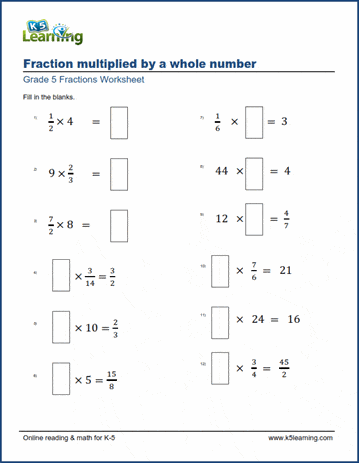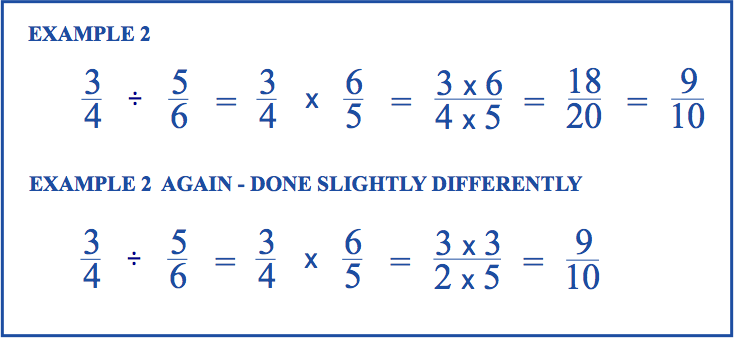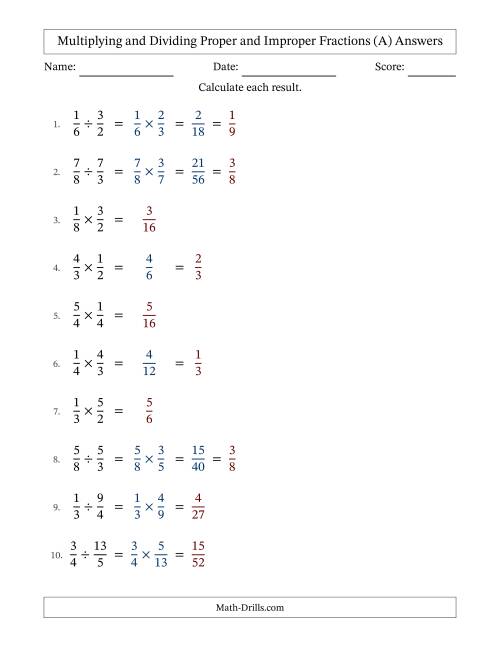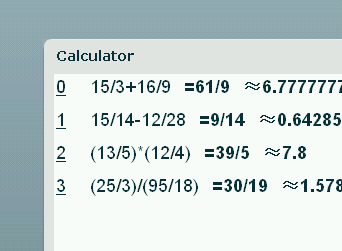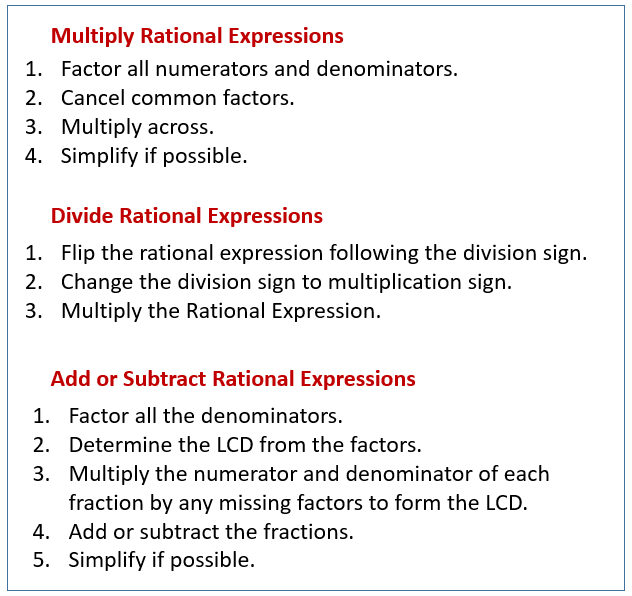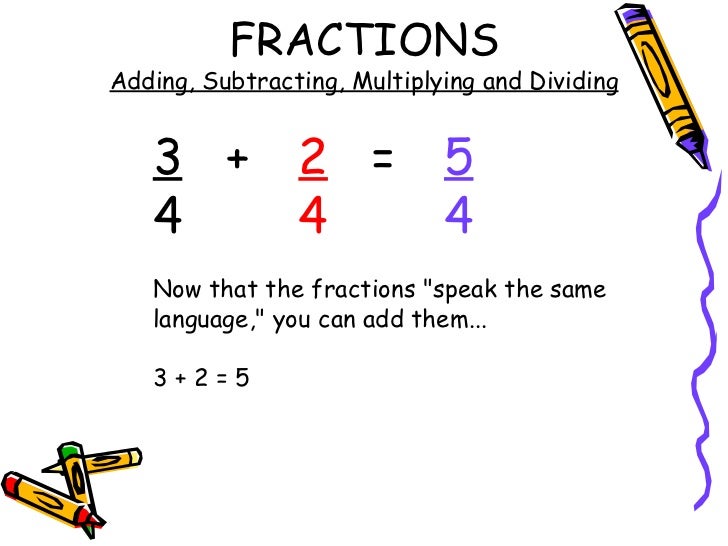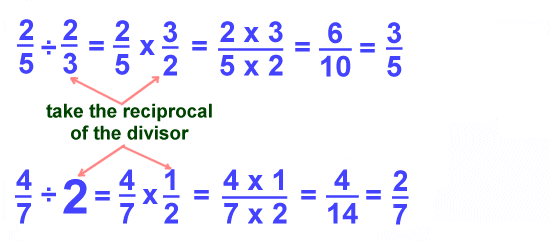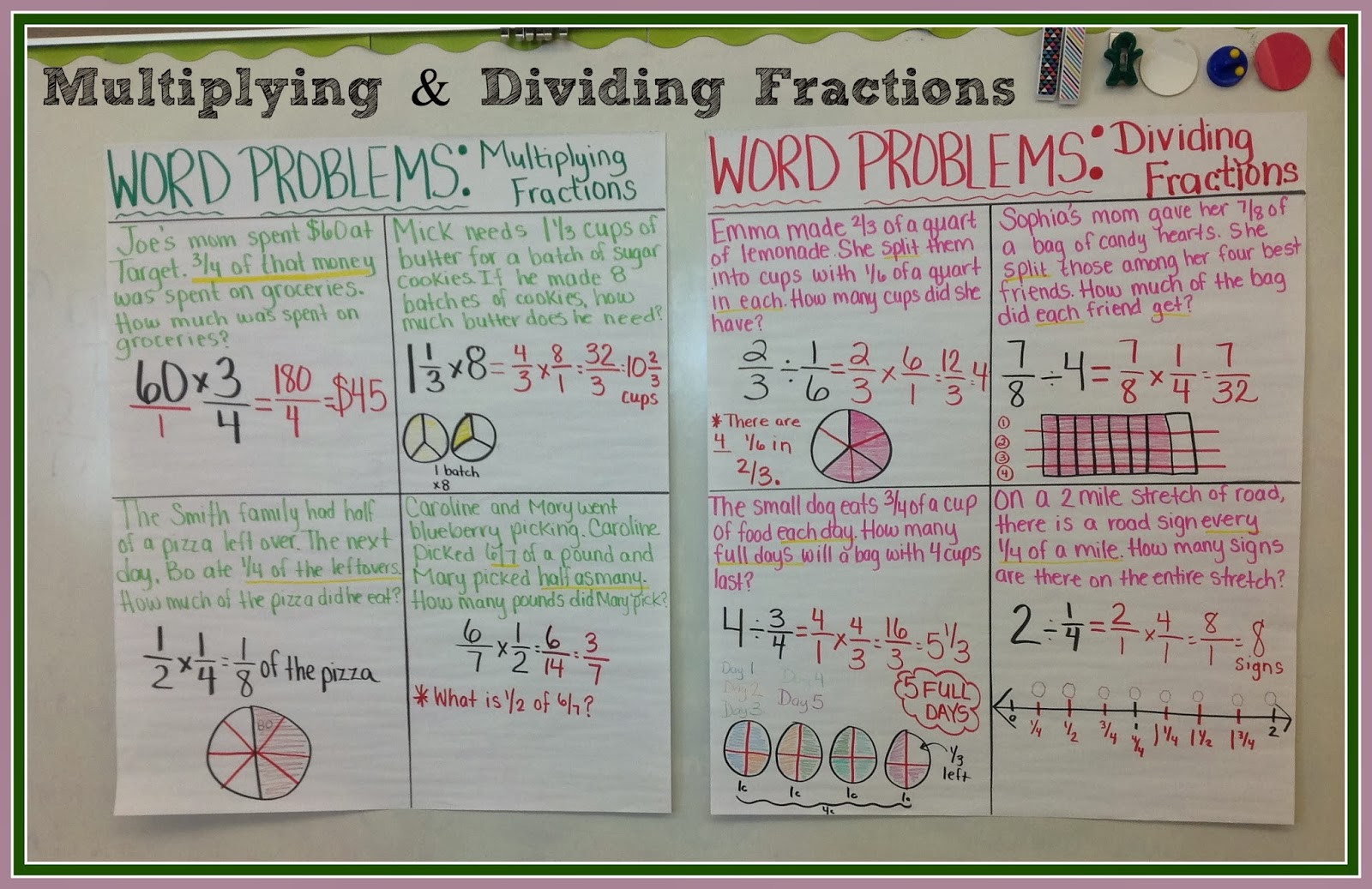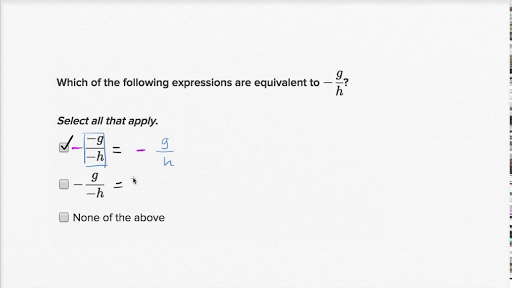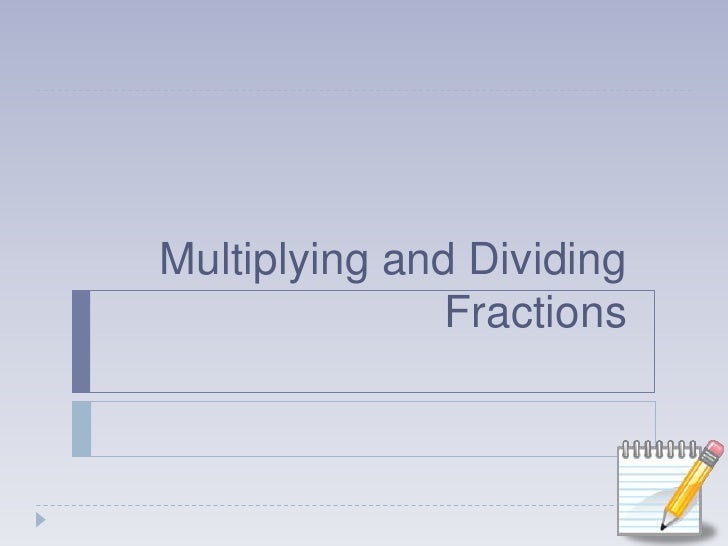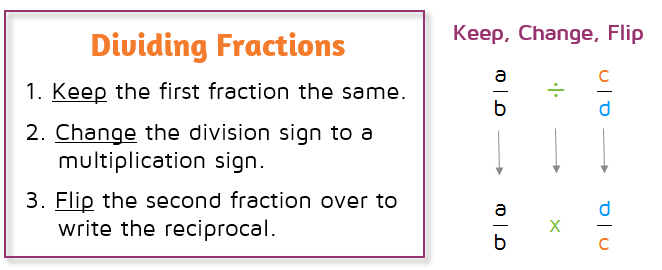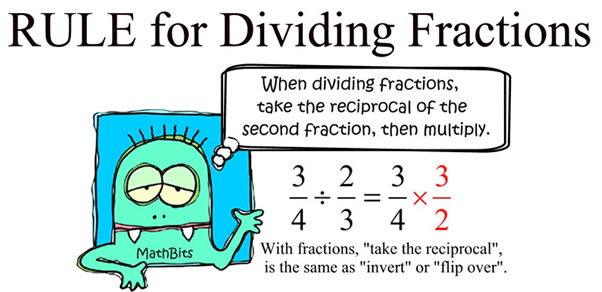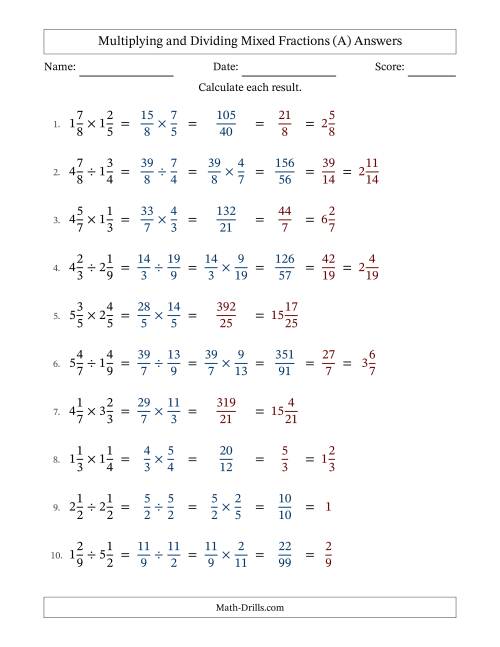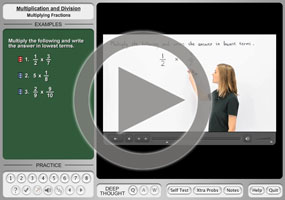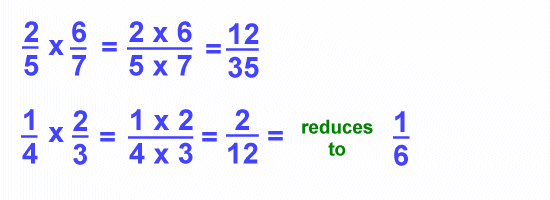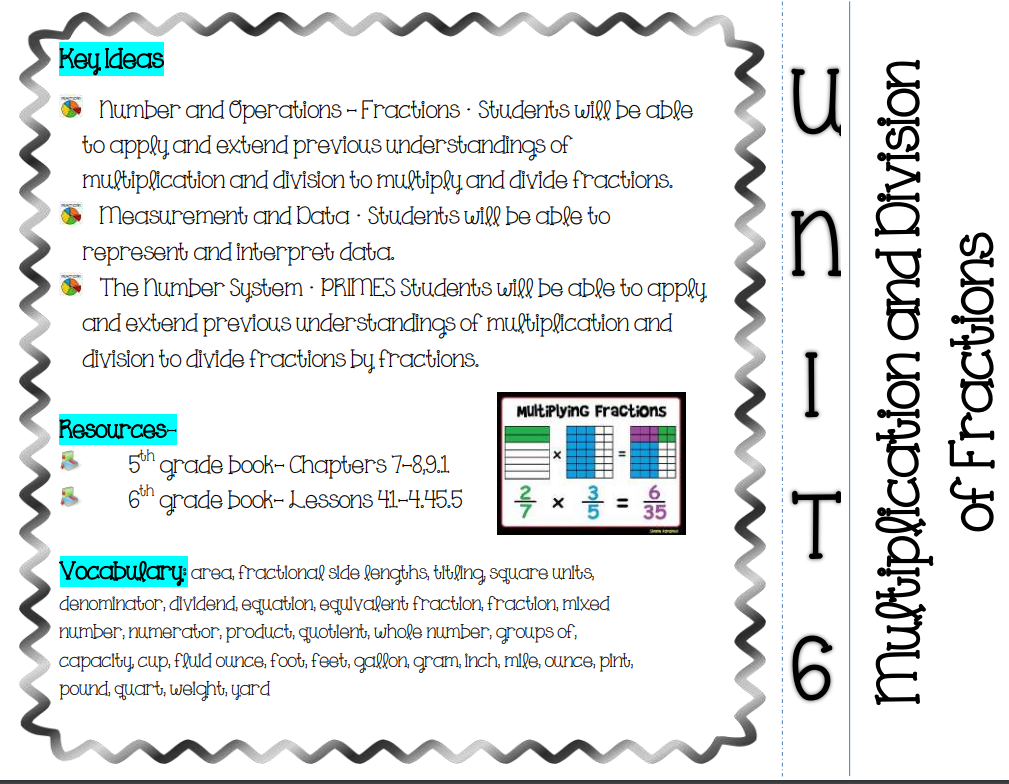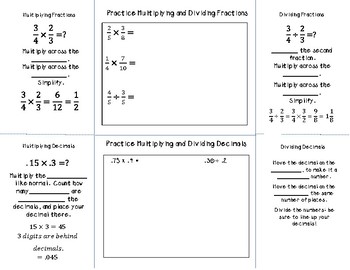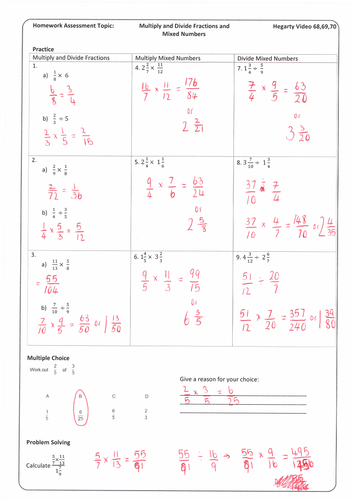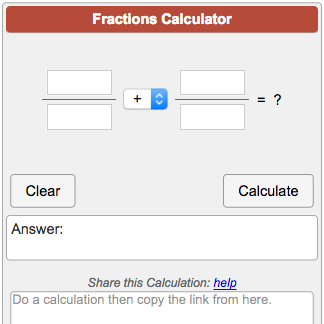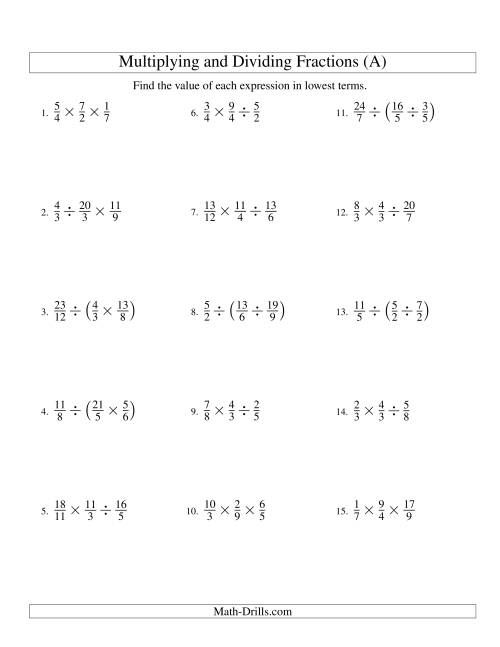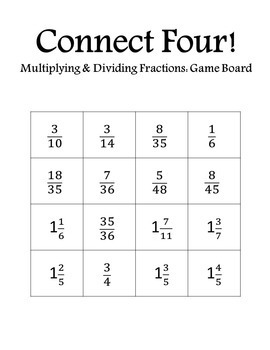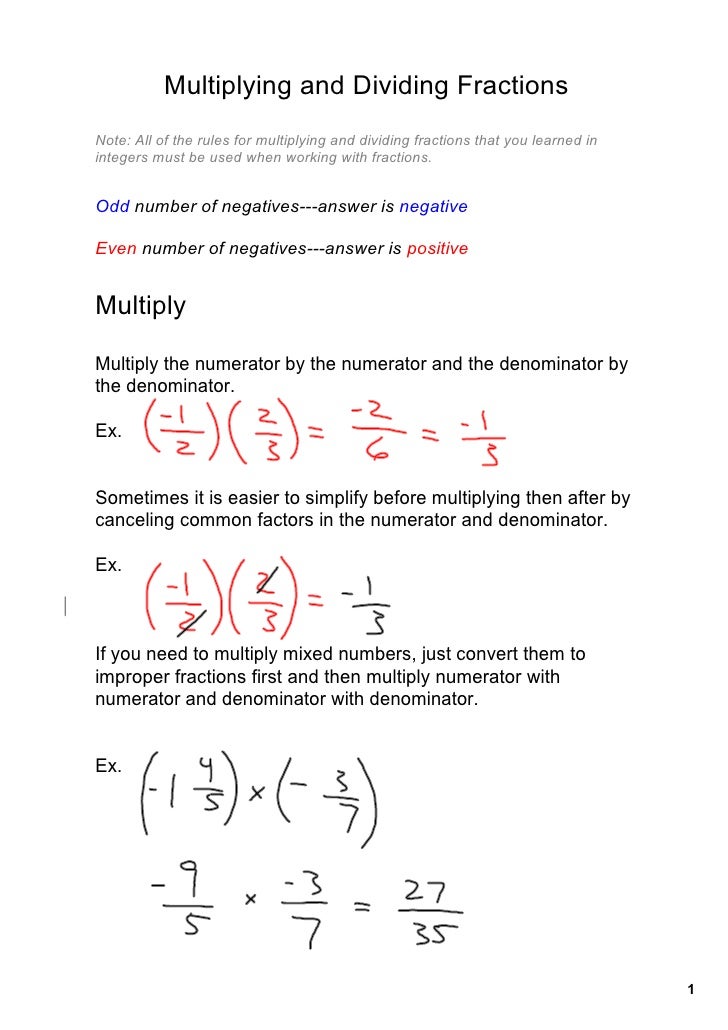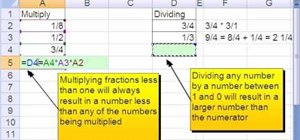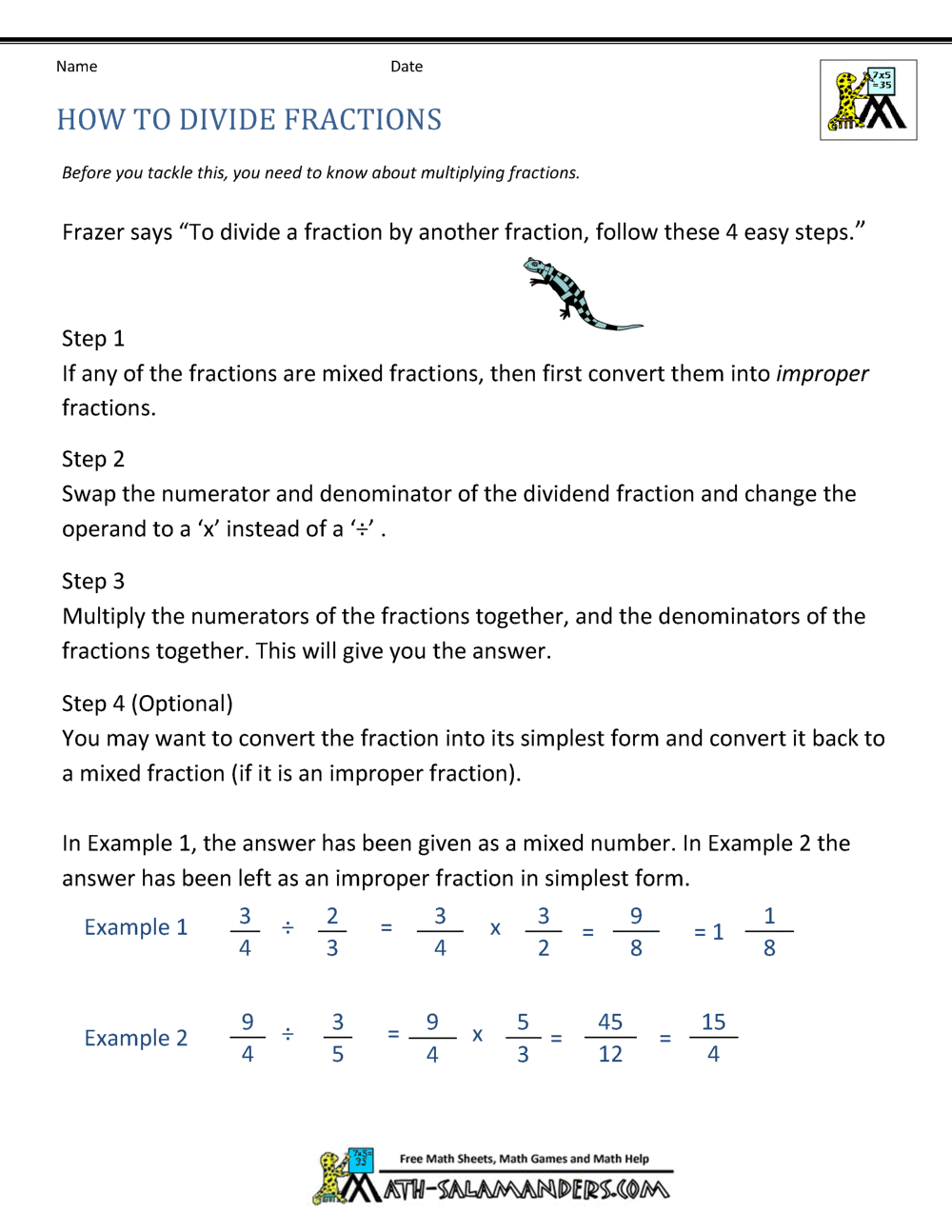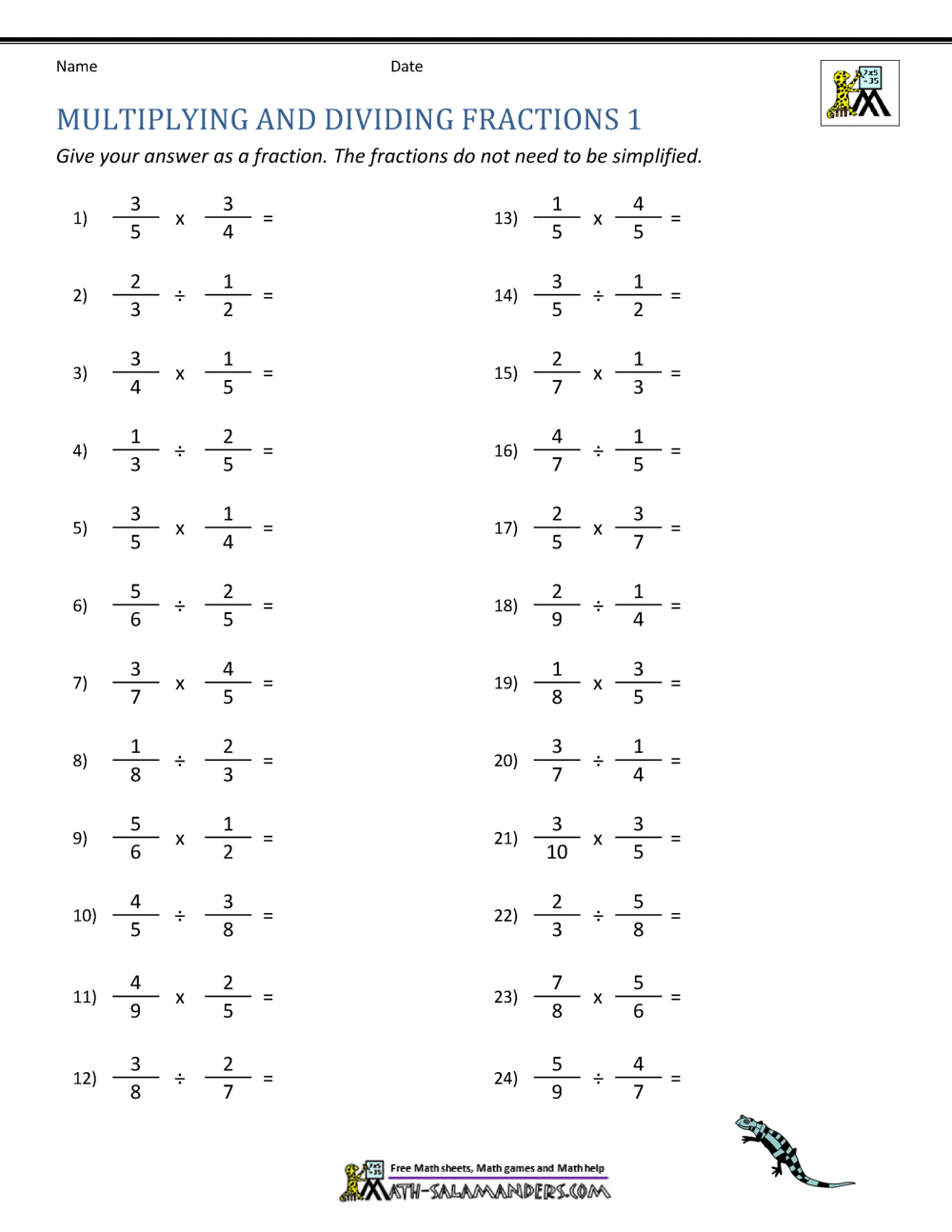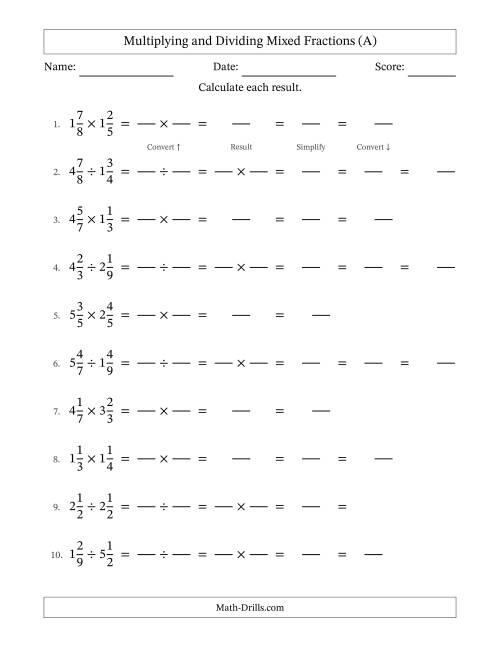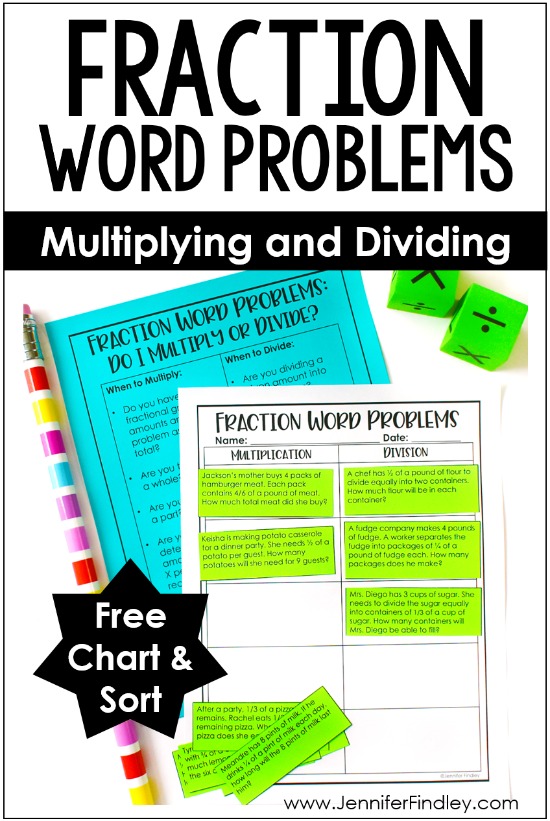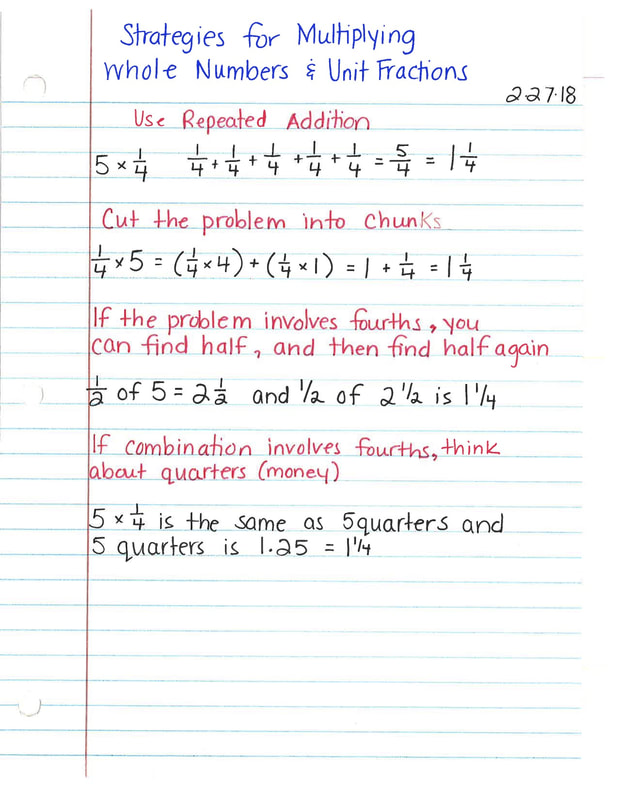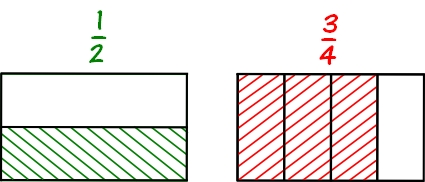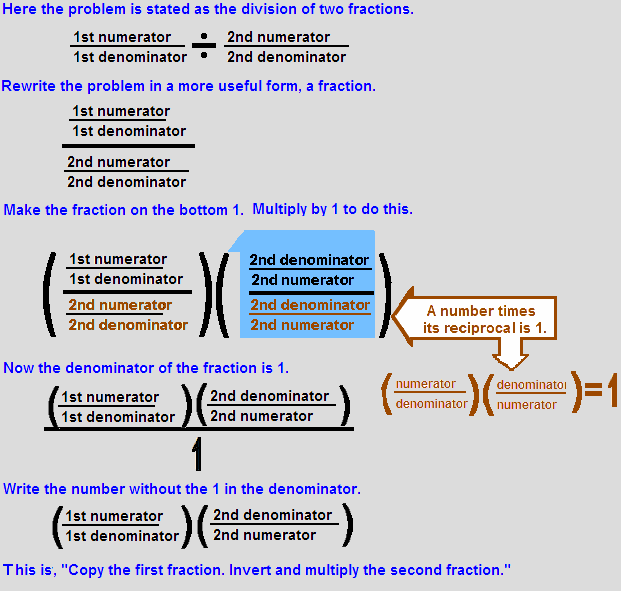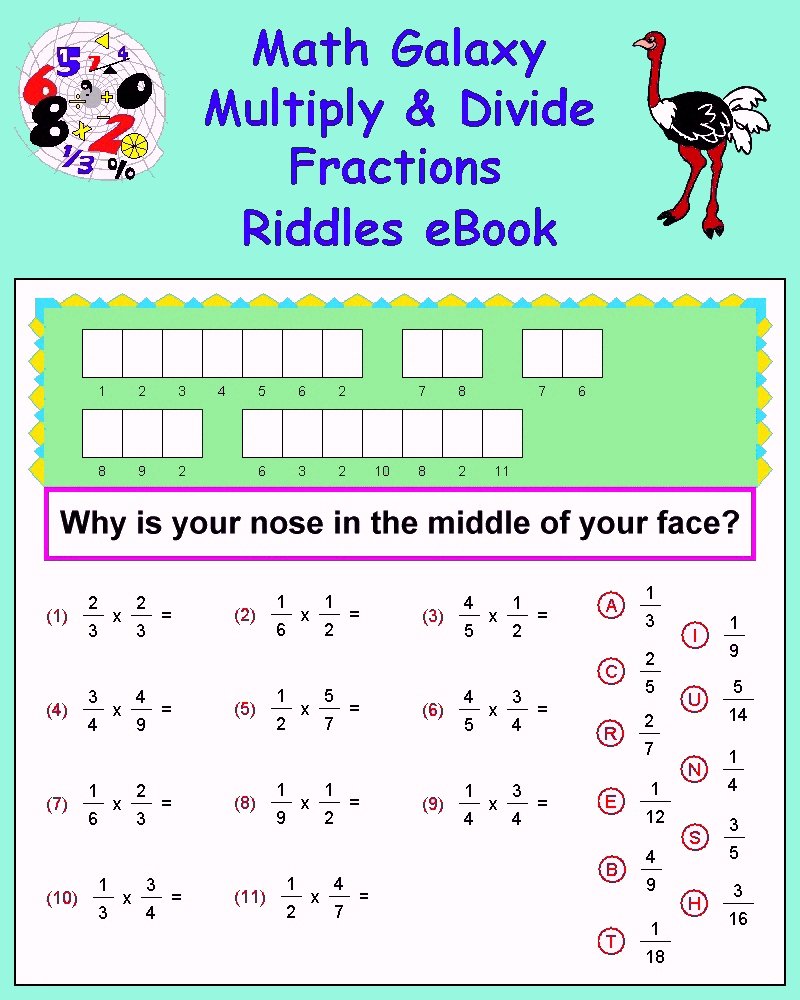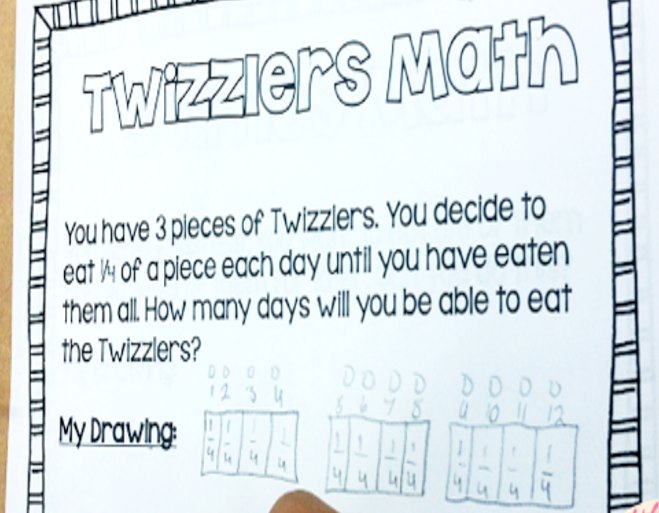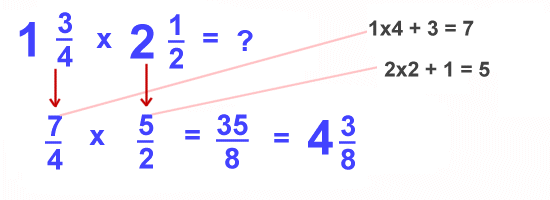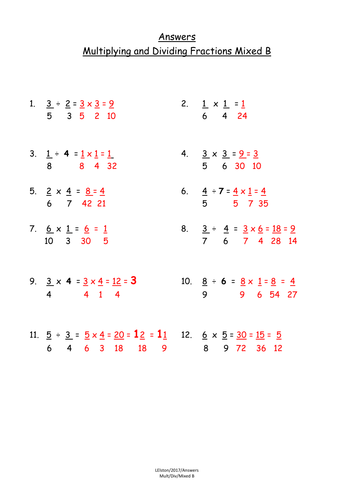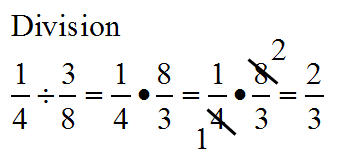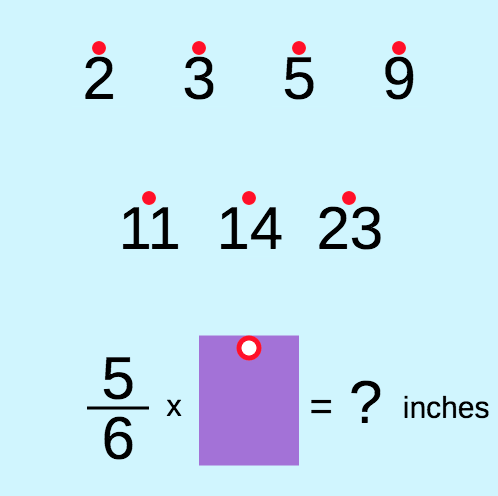How To Multiply And Divide Fractions
72 x 34 7 x 32 x 4 218.

How to multiply and divide fractions. Dividing fractions is just about as easy as multiplying them. Anything lurking below the line in the fraction gets multiplied together. When you divide one fraction by another fraction you switch the numerator and denominator of the divisor fraction then multiply. Switch the numerator and denominator of 43 getting 34 then multiply.
When you divide by a fraction the first thing you do is flip n multiply. When multiplying fractions do not change to a common denominator. Multiply the denominators together. This is a video explaining how to multiply and divide fractions with some very common hesi questions.
When you want to multiply fractions together its beautifully simple. Anything sitting on top of the fraction gets multiplied together. In some cases the product will already be in lowest terms. To divide fractions you simply have to flip the numerator and denominator of one of the fractions multiply the result by the other fraction and simplify.
Then you proceed with the problem just as if you were multiplying. Theres just one extra step. To multiply two fractions then simply multiply the numerators and multiply the denominators to get the product. Heres how that looks.
Dividing fractions invert and multiply in dividing fractions you take the reciprocal invert the fraction of the divisor and multiply the dividend. Multiply the numerators together. Say instead of multiplying 72 by 43 youre dividing 72 by 43. Take the reciprocal of the divisor.
Its easier to understand this visually. This video shows how to multiply and divide fractions by multiplying the numerators and denominators even if the fractions have unlike denominators. Dividing fractions is very similar to multiplying fractions you even use multiplication. The one change is that you have to take the reciprocal of the divisor.
In algebra or basic math cancelling out equal. To multiply fractions all you have to do is multiply the numerators and denominators and simplify the result. This becomes the numerator of your answer. If any numerator has a divisor in common with any denominator then just as in reducing a single fraction we can divide them by that common divisor.
How to multiply fractions. In others you may need to reduce it to lowest terms.



